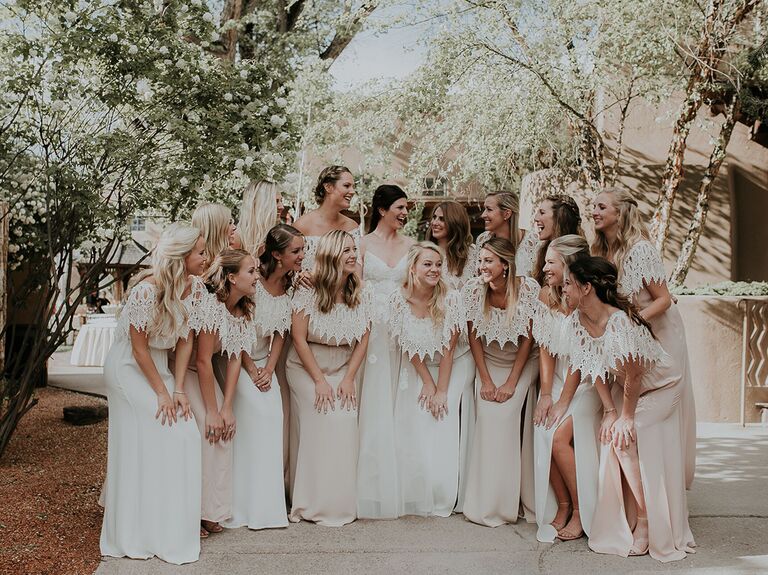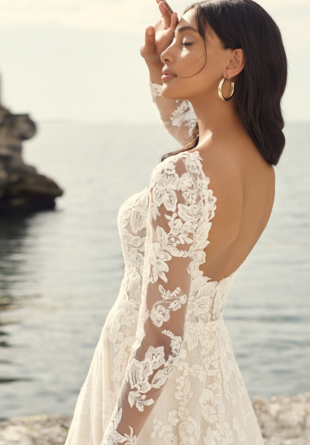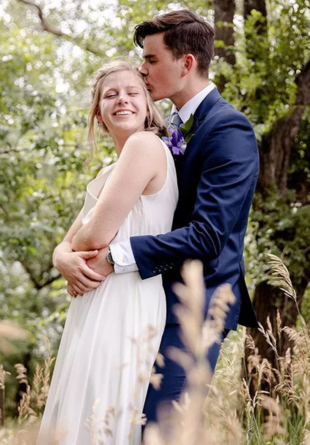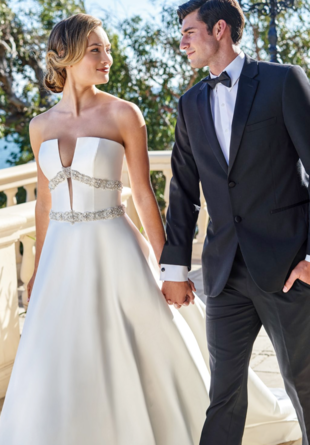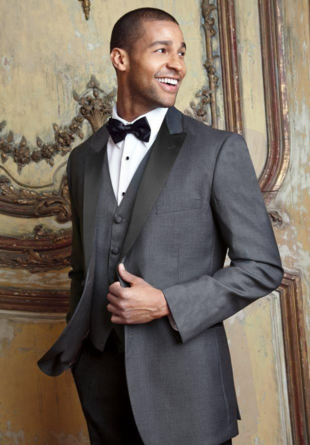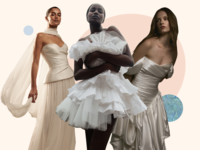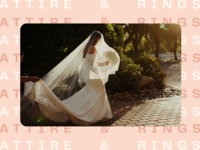Ivory vs. White Wedding Dresses: What’s the Difference?
Shopping for your wedding dress is one of the most exciting aspects of planning your wedding. But before you start browsing various designers and dress silhouettes, it's important to know the difference between ivory vs. white. These two shades are the most popular wedding dress colors, but they are slightly different. While you might focus on more prominent dress details like the neckline, skirt shape, and length at first, the color of the gown is just as crucial.
Making the distinction between ivory and white can be tricky given their subtle differences. If you plan on wearing a white shade on your wedding day, it's important to know the key qualities of both colors to help you make the best decision. To help, we break down everything to know about ivory vs. white wedding dresses, as well as our top tips to help you pick the best color for your vision.
- Ivory vs. White: What's the Difference?
- How to Choose Your Wedding Dress Color
- Are There Other Shades of "White" to Know?
Ivory vs. White: What's the Difference?
So, what's the difference between ivory and white? It's simple: White is a brighter, purer shade, while ivory is a softer shade with yellow undertones. Pure white is the brightest hue because it isn't mixed with any other colors. You might come across variations like "stark white," "natural white" or "diamond white." In general, these shades will be so crisp that they can appear blue under certain lighting. Natural white is the purest form of the color that fabrics can be—if you're looking at a stark white dress, it was likely bleached to get the pure hue. In neutral lighting, though, almost all forms of white photograph the same.
You might wonder: Is ivory white? Technically, yes. Sometimes referred to as "eggshell," ivory is a creamier shade of white that has warmer undertones. Some shades of ivory even give off soft hints of yellow. That's not to say your ivory wedding dress will look yellow while you're wearing it, though. It can actually be challenging to differentiate ivory and white with the naked eye. The difference between the colors is so minimal, you don't have to worry about one looking drastically different from the other.

How to Choose Your Wedding Dress Color
Now that you know the difference between both shades, you'll have to decide between a white or ivory wedding dress. Generally, brighter shades of white complement darker skin tones. A stark white dress against lighter skin can tend to make the wearer look washed out. Setting can also be a significant factor. "When considering whether to choose white or ivory for a wedding gown, it's essential to factor in the venue and lighting," says designer Ashley Stambouli. "For instance, in darker or nighttime venues with yellow lighting, ivory might appear dull or less elegant compared to white, which offers more contrast and helps the bride stand out. Therefore, opting for white in such settings can enhance the overall elegance and ensure the bride shines on her special day."
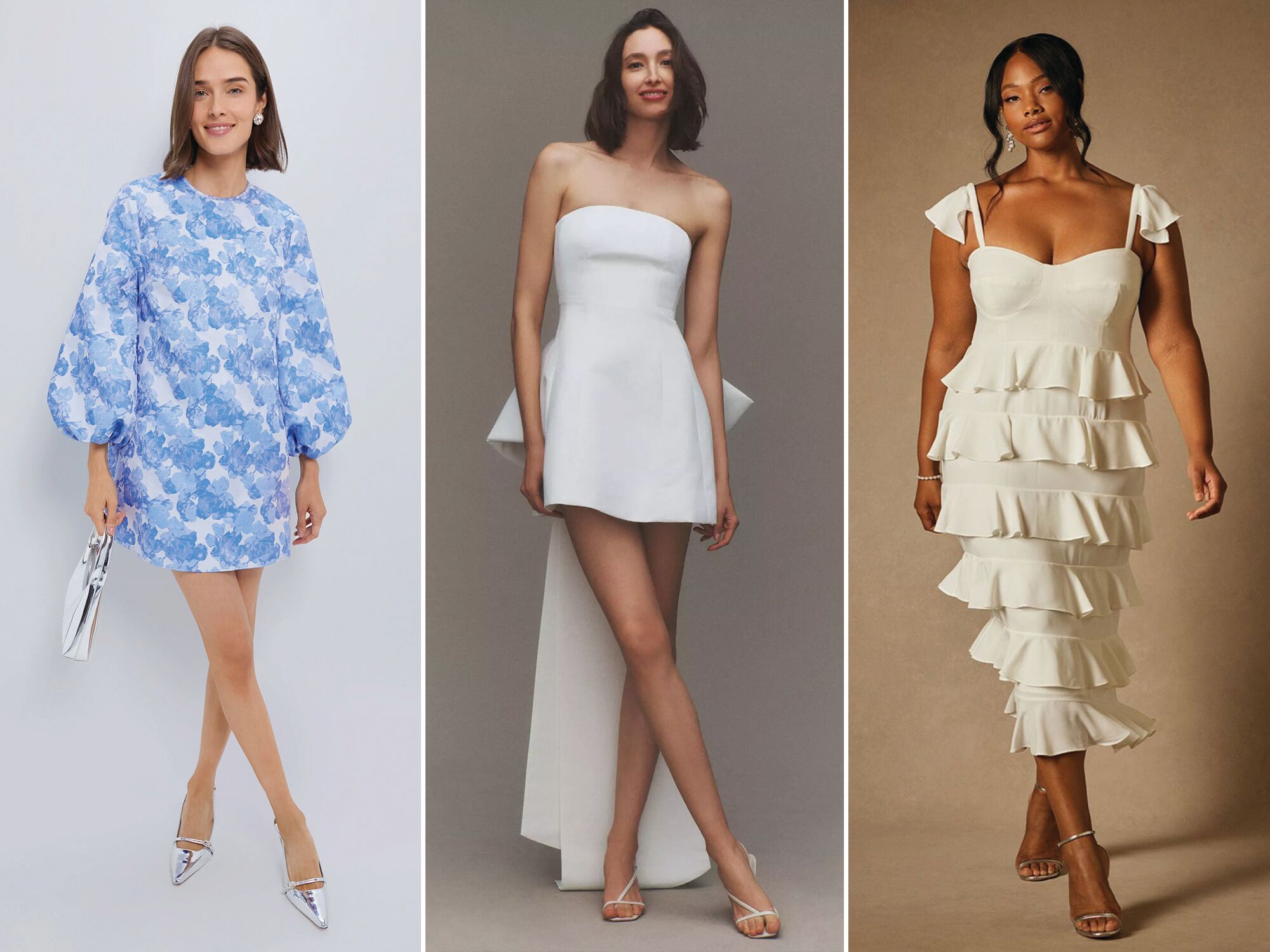

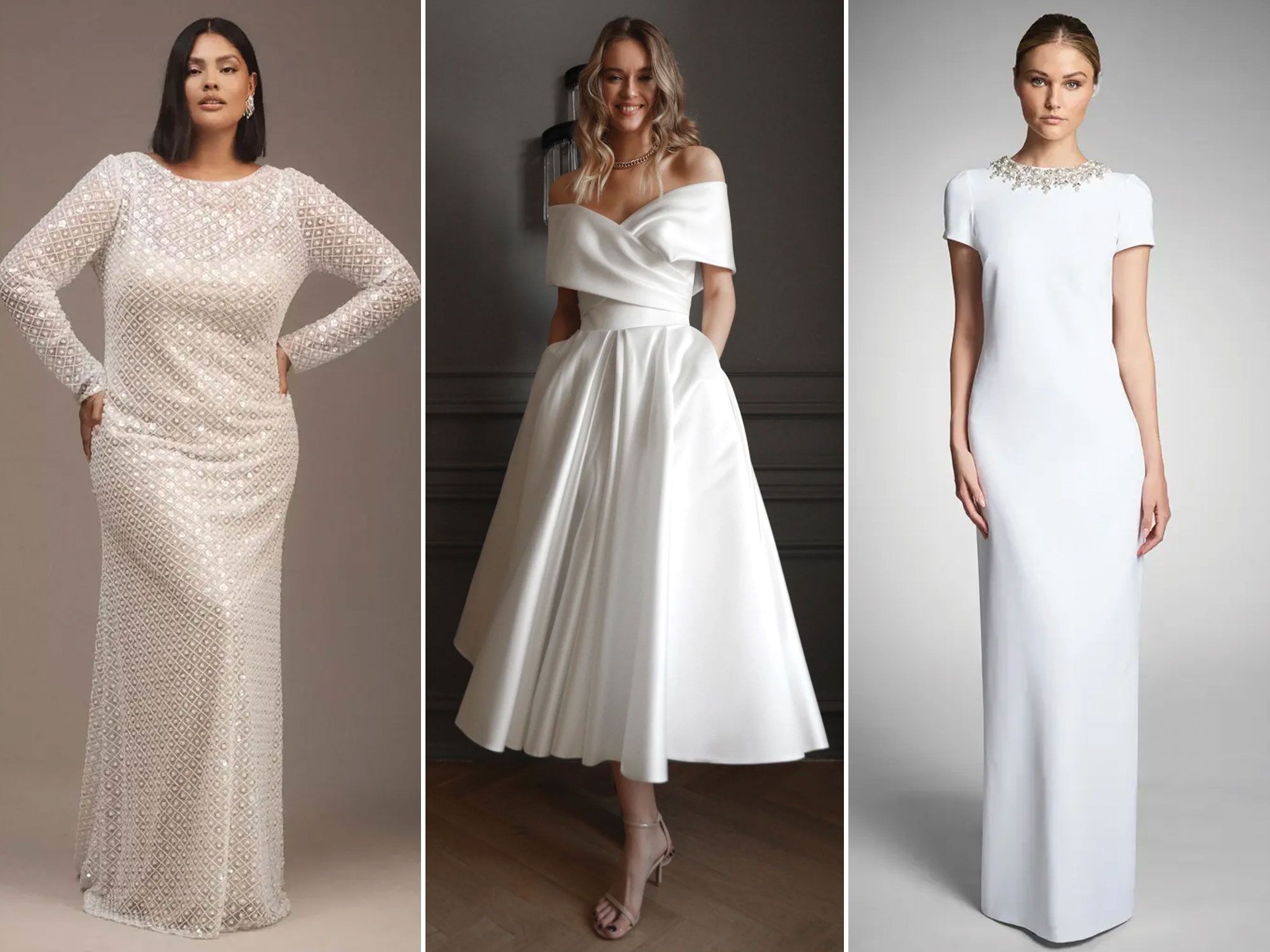
Certain materials also work better with different colors. White pops best on matte fabrics, like crepe, while silkier materials like chiffon, satin, and taffeta reflect the deeper undertones of ivory shades. The lining of a dress will also enhance the overall appearance. Lining that matches the overlay will make the color appear richer, while a slightly darker lining will add dimension.
To find your ideal shade of white, it's best to shop at your local bridal salon. Being able to try on different colors in natural lighting is the best way to find the shade you prefer. Plus, having a bridal consultant on hand to offer expert tips and suggestions is an invaluable resource during your shopping process. What matters most, though, is that you love the color of your wedding dress. Factors like skin tone and traditional etiquette should simply be considerations—not steadfast rules. If you have your heart set on a certain shade, feel empowered to wear it because it's what you want. After all, your wedding dress should be exactly what you envision for your big day.
Are There Other Shades of "White" to Know?
In the past, traditional wedding etiquette also indicated that pure white wedding dresses were most appropriate—but that's hardly the case anymore. In fact, ivory is a great dress color option for those who don't want a pure white gown. You can even search for an ivory dress that has champagne or blush undertones for a modern, fashion-forward look. Or, forgo a white gown altogether in favor of a colorful wedding dress, like black, red, gold, or any other shade you love. When it comes to modern wedding dress colors, the options are limitless.
- Pure White: This is the starkest, most brilliant of whites. In the absence of a fabric swatch, think printer paper. Because achieving this particular shade most often requires bleach (meaning synthetic fabrics must be used), it can appear to have a blue tint in some photography.
- Natural White: As this is the brightest shade of white that can be achieved with natural fibers, it is also referred to as "silk white" and falls about midway between pure white and ivory.
- Pearl: A creamy off-white, pearl white dresses (aptly for their name) are often seen in fabrics with a bit of sheen such as satin and mikado. "Such subtle variations offer nuances that can complement various skin tones and wedding themes," says Stambouli
- Blush: With just the faintest hint of pink, a blush wedding dress is the perfect choice for brides seeking a more feminine aesthetic. "Blush (and champagne) are often chosen by brides seeking to break away from tradition or infuse their wedding with a touch of contemporary elegance," says Stambouli.
- Champagne: "Champagne has gained popularity for its romantic and vintage-inspired appeal," says Stambouli. The golden hues of this warm shade are a perfect complement to a rustic outdoor setting, particularly in the fall months.
